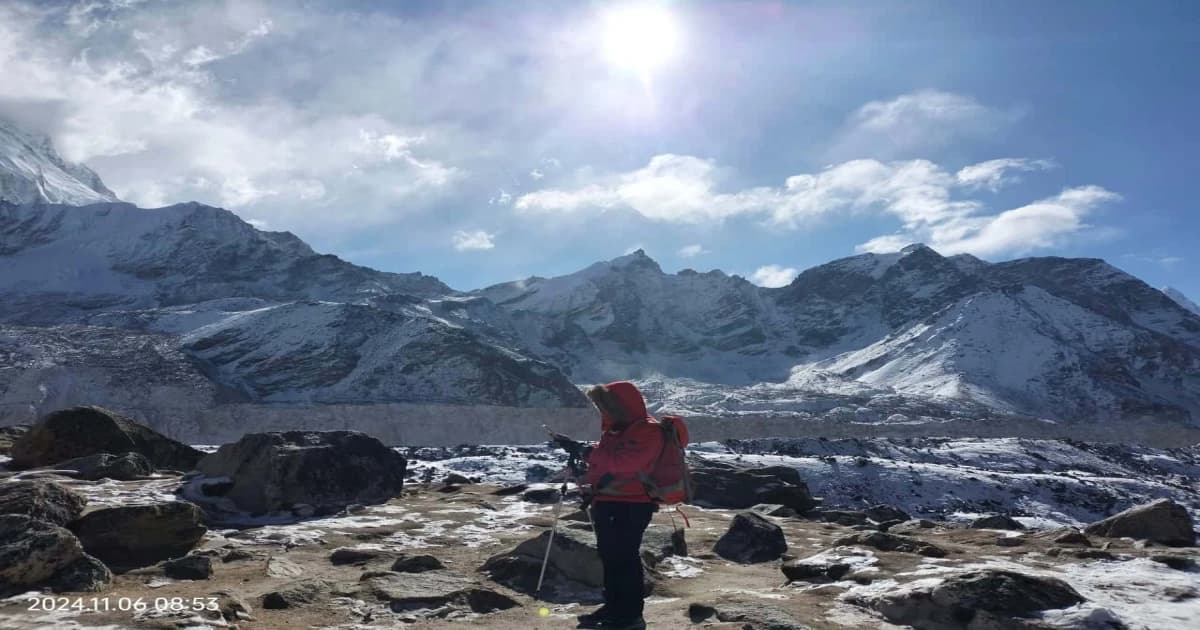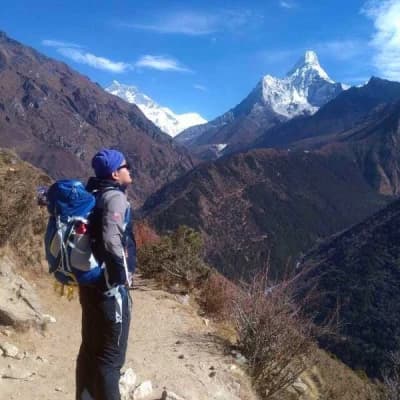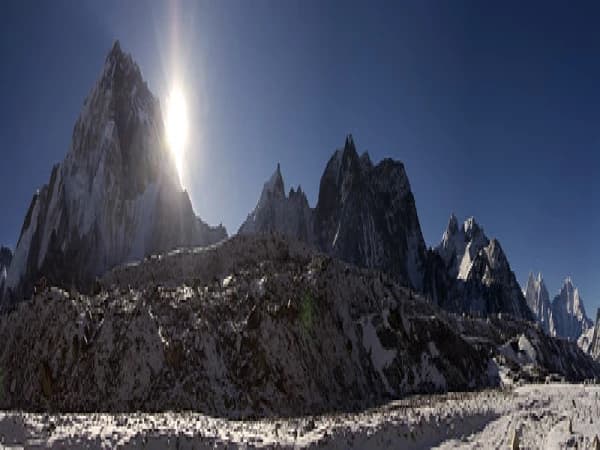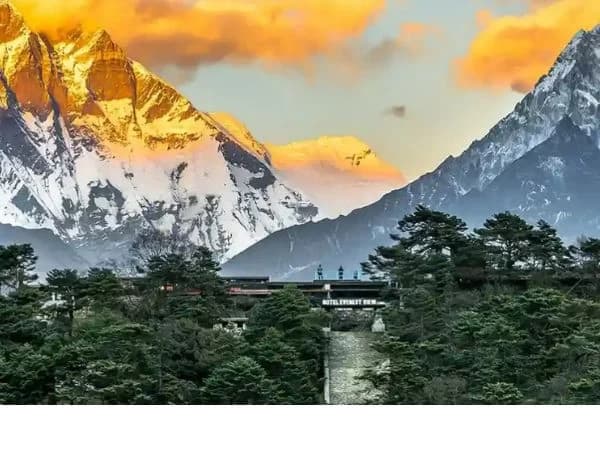The Everest Base Camp (EBC) trek in June is a hidden gem for adventure seekers. This time of year offers the chance to witness the mighty Himalayas before the monsoon arrives. With moderate weather, fewer crowds, and lush landscapes, trekking in June is an experience like no other. Let’s dive into what makes June a great time to embark on this journey and how to prepare for it.
Why June is a Great Month for the EBC Trek
1. Moderate Weather Conditions
June brings pleasant weather to the trekking trails. Lower altitudes are warmer, while higher elevations are cool but manageable. Clear mornings provide stunning views of Mount Everest and other peaks, though afternoon clouds are common.
2. Fewer Crowds
Unlike the bustling spring and autumn seasons, June offers solitude. The trails are quieter, allowing you to immerse yourself in nature and enjoy peaceful tea houses with personalized services.
3. Spectacular Mountain Views
Mornings in June often present crystal-clear views of snow-capped peaks. While the occasional afternoon rain might bring cloud cover, the breathtaking scenery compensates for the unpredictability.
4. Lush Greenery
The early monsoon brings vibrant vegetation. The trails are lined with blooming flowers, and the contrast of green valleys against snowy mountains creates a magical atmosphere.
5. Unique Cultural Encounters
With fewer trekkers, you can engage more deeply with the Sherpa community. Locals are more relaxed and willing to share stories, providing a richer cultural experience.
What to Expect During the Trek in June

Typical Day on the Trail
- Begin your day around 7:00 AM to 8:00 AM, starting with a light stretch. Breakfast typically includes porridge, eggs, and Nepali bread to fuel your trek.
- After breakfast, you’ll start trekking steadily, enjoying the mountain views. Expect to walk for 5-7 hours daily, with frequent rest breaks.
- You will stop frequently throughout the day for tea breaks in scenic spots or local villages. This is a great way to rehydrate and take in the scenery.
- You can have lunch at one of the many teahouses en route, which offer rice, noodles, or dal bhat to fill you up for the rest of the trek.
- After lunch, continue trekking and head towards your next destination, enjoying the hike.
- Arrive at your tea house in the late afternoon and take time to rest before dinner. This is a good time to rest your muscles and enjoy the surroundings.
- Dinner is in the evening. It is usually dal bhat, soup, and vegetables, which are good enough to nourish you.
- After dinner, relax and prepare for the next day's trek, sleeping well for the challenges ahead.
Accommodation and Tea Houses During June

In June, the tea houses along EBC Trek are less crowded, offering a peaceful and more personalized experience. The rooms are basic, including a bed with blankets for comfort after a long day of trekking. The meals are heavy, often consisting of dal bhat, noodles, and pasta. There are fewer trekkers, so the service is more attentive, and many tea houses have wood stoves for heating. Some offer hot showers, although these come at an extra cost, depending on the location.
Challenges You Might Face in June
- Unpredictable weather
- Reduced visibility
- Slippery trails
- Insects and leeches
- Flight delays
- Limited supplies
- Energy drain
- Remote medical help
Packing List for Everest Base Camp in June
Clothing
- Lightweight, moisture-wicking shirts and pants
- Insulating layers like fleece jackets
- Waterproof outerwear (jacket and pants)
- Warm hat and gloves for higher altitudes
Footwear
- Waterproof trekking boots with ankle support
- Moisture-wicking and wool socks
Essentials
- High-SPF sunscreen and lip balm
- Refillable water bottles or a hydration pack
- Energy bars and trail mix
Tech and Accessories
- Camera with extra batteries
- Trekking poles for stability
- Waterproof backpack cover
Permits and Documentation Needed
- TIMS Card: This is a must for all trekkers for safety and to register in an emergency.
- Sagarmatha National Park Permit: This is needed to enter the national park where the EBC Trekking is located.
- Passport: A valid passport is needed for identification and border crossing. Visa: A tourist visa from Nepal is valid for 15, 30, or 90 days, depending on your plans.
- Travel Insurance: High altitude trekking, medical emergency, and evacuation insurance.
- Photocopies of Important Documents: Backup for your passport, visa, and permits in case they get lost or stolen.
- Flight Tickets: Copy of your air tickets to and from Nepal.
- Emergency Contact Information: List significant numbers for emergencies, including local authorities and your embassy.
Pros and Cons of Trekking to EBC in June
Pros:
- Fewer trekkers, quieter experience
- Lush landscapes with blooming flowers
- Clear views in the mornings
- Flexible tea house availability
- Lower trekking costs
Cons:
- Unpredictable weather and storms
- Slippery trails
- Higher risk of altitude sickness
- Reduced visibility in afternoons
- More insects and leeches
Trekking to Everest Base Camp in June is an adventure filled with breathtaking landscapes, cultural richness, and a touch of challenge. While the weather can be unpredictable, the quieter trails and lush surroundings make it a rewarding experience.
At Tidy Himalaya, we prioritize responsible trekking to preserve the beauty of the Himalayas. Join us to explore this incredible journey while respecting the environment and local communities.
Ready for your Everest Base Camp adventure in June? Let’s make it unforgettable!
FAQs
What are the temperatures like in June?
Temperatures are moderate at lower altitudes but can drop below freezing at night in higher regions.
What are the crowds like at Everest Base Camp in June?
The crowds at Everest Base Camp in June are generally fewer than peak trekking seasons like spring (April-May) and autumn (September-November). This provides trekkers with a quieter and more serene experience, but the trails may still have some trekkers.
How cold is it at EBC in June?
Although June is much warmer than the winter months, temperatures at EBC can still drop below freezing at night and higher altitudes; having enough warm clothes for these cold nights is necessary.
Is June a good time to trek to EBC?
Yes, June is ideal for those seeking fewer crowds and a quieter trekking experience, though occasional rains are expected.
What should I pack for the EBC trek in June?
Clothing and accessories for the June trek should include light trekking clothes, a set of warm clothing, a waterproof jacket, and other primary trekking stuff. The rain and difference in temperatures call for warm and cold conditions.


-(600-x-450-px)-(1200-x-675-px)-(1200-x-675-px)-(600-x-450-px).webp&w=1200&q=75&dpl=dpl_2PwU5ZDv8uoJ3KrzEVbz8N547HgX)
.webp&w=1200&q=75&dpl=dpl_2PwU5ZDv8uoJ3KrzEVbz8N547HgX)
.webp&w=1200&q=75&dpl=dpl_2PwU5ZDv8uoJ3KrzEVbz8N547HgX)
-(600-x-450-px)-(1200-x-675-px)-(600-x-450-px)-(1).webp&w=1200&q=75&dpl=dpl_2PwU5ZDv8uoJ3KrzEVbz8N547HgX)

-(600-x-450-px)-(1200-x-675-px)-(600-x-450-px)-1.webp&w=1200&q=75&dpl=dpl_2PwU5ZDv8uoJ3KrzEVbz8N547HgX)

.webp&w=1200&q=75&dpl=dpl_2PwU5ZDv8uoJ3KrzEVbz8N547HgX)
.webp&w=1200&q=75&dpl=dpl_2PwU5ZDv8uoJ3KrzEVbz8N547HgX)
.webp&w=1200&q=75&dpl=dpl_2PwU5ZDv8uoJ3KrzEVbz8N547HgX)